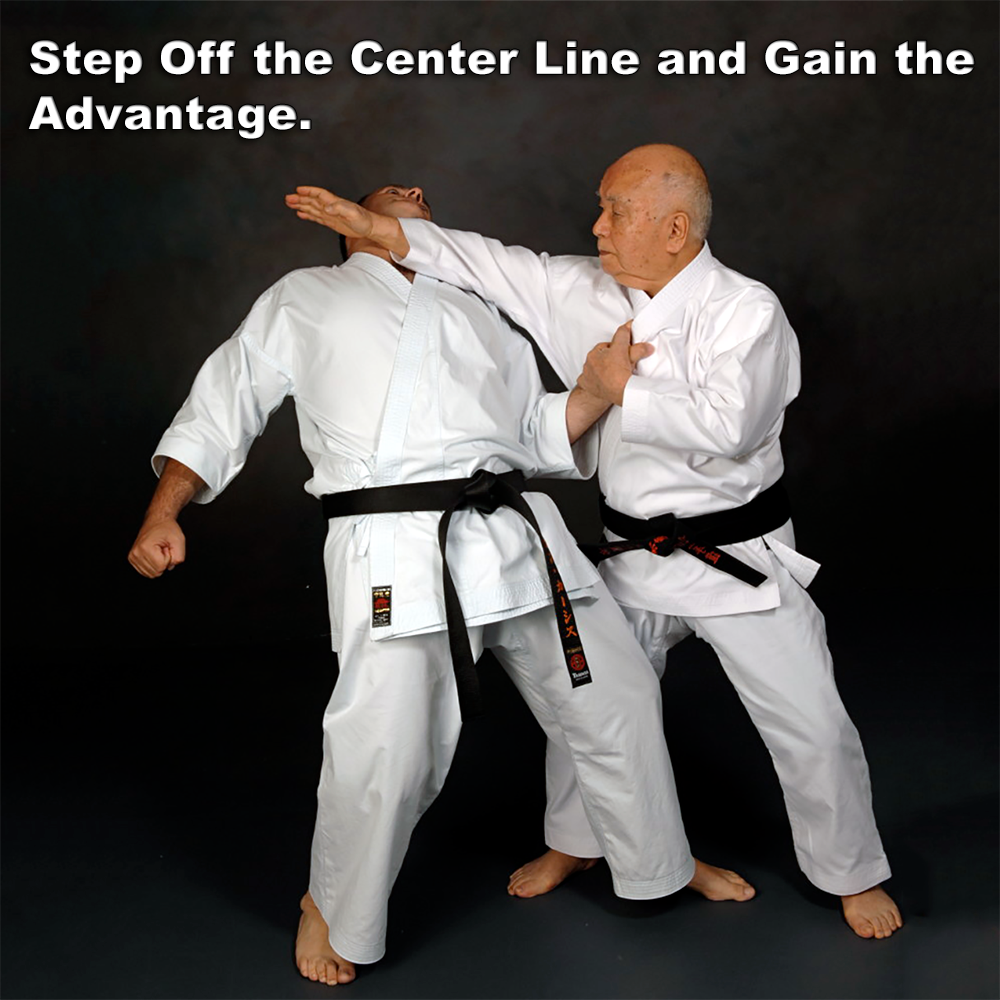
(Approx 1 Minute 50 second read)
I was asked a great question: “Do all kata start with a move to the left? Are there any kata that start to the right?”
.
Many beginners start off by learning maybe ‘Fukyugata’, ‘Gekisai’, the ‘Pinan’ kata, which all share one commonality – the first movement goes left. But the answer is no, not all kata start with a movement to the left.
.
Let’s address the elephant in the room first, as I think it’s important to note that you are not being attacked from the left simply because your first movement is to the left.
.
The emphasis on starting to the left stems from a combination of practical and strategic reasons.
.
So let’s consider these kata in their most basic application. Start with someone directly in front of you – moving left in the kata simulates your own movement left to get off any attack line. Any angle like this is going to be a strategic advantage.
.
Another reason for being left-centric of course, is that we often focus on dealing with right-handed attacks first, positioning yourself away from the opponent’s dominant right side.
.
Historically, kata were developed with the assumption of close-quarter combat, where movements are designed to give you the upper hand by controlling angles and positioning. The first move could just as easily be to the right in other situations, depending on the specific attack.
.
While it may be practical to start by addressing right-handed attacks, kata movements are often mirrored to develop skill ensuring you can handle attacks from both sides.
.
Modern interpretations sometimes describe the applications as defending against attacks from four or eight directions, like attackers placed at different points on a compass. While this may be visually appealing for demonstrations, it’s not a realistic or historical approach.
.
For me, I prefer a more practical scenario: you are engaged in close combat with a single opponent directly in front of you, and each movement is designed to address that threat.
.
Whether we move left or right, move in or out, every movement is designed with intention. Helping us develop the ability to respond to various attacks, no matter the handedness of the opponent.
.
Every movement should be intentional, combining tactical advantage and ambidexterity to help us adapt to different situations.
.
Of course, this is just a basic interpretation to answer the question being asked. Movement in kata can represent much more – engagement with throws, trips, controlling, unbalancing, and other tactics that go beyond simple steps to the left or right.
.
Ultimately, every movement in kata is a lesson, and the more we study, the more those lessons reveal themselves.
.
.
Written by Adam Carter – Shuri Dojo
.
.
Photo Credit: Kenei Mabuni of Shito-Ryu courtesy of Kassis Karate Academy
